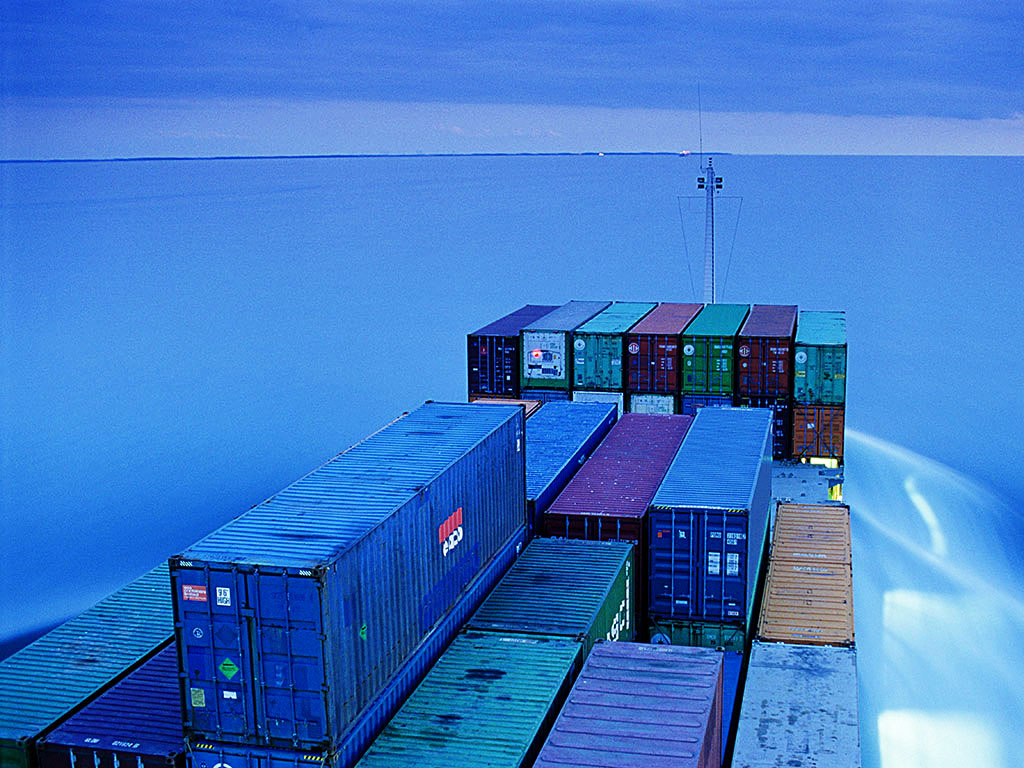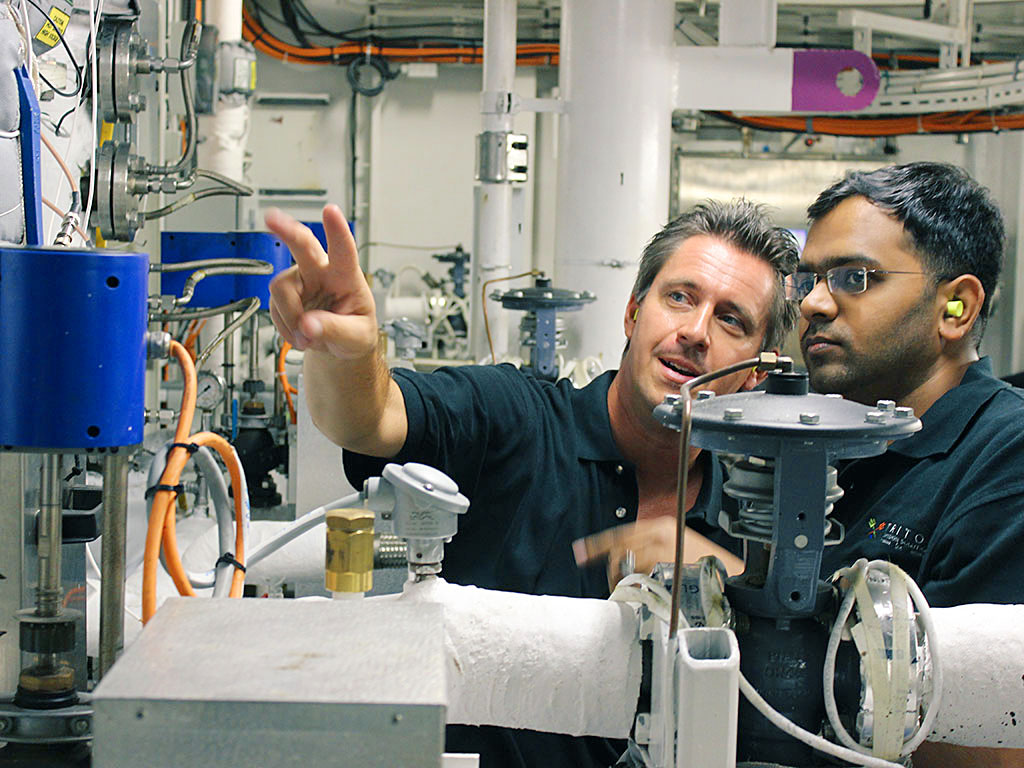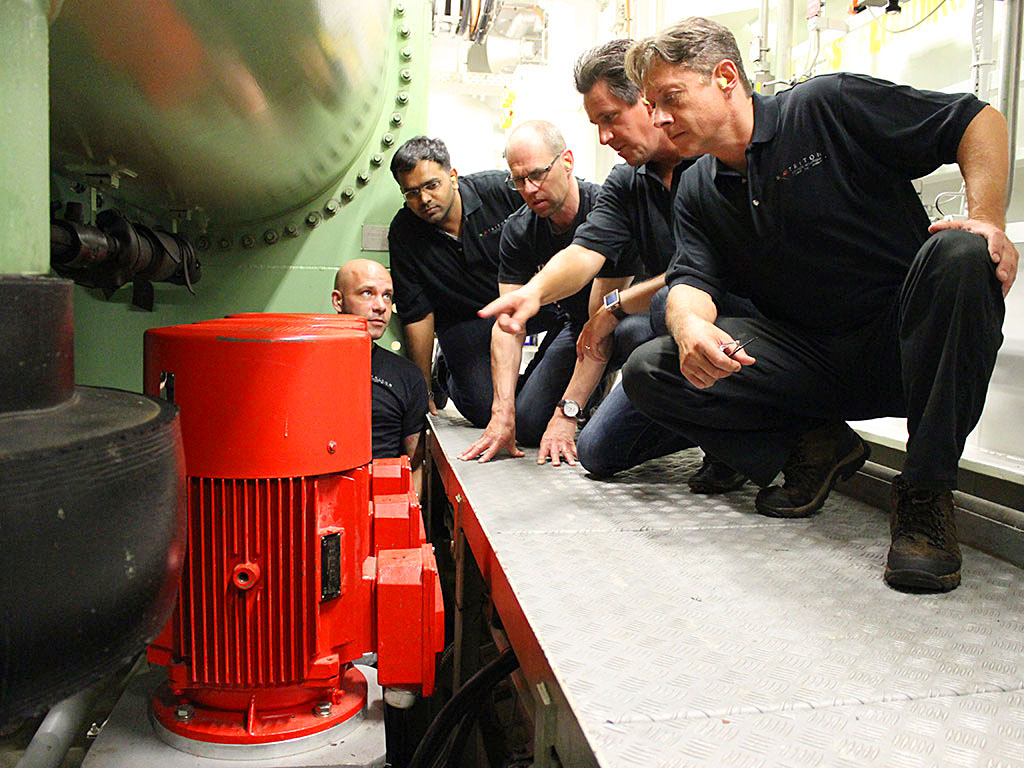Sulphur emissions in the shipping industry
The global shipping industry has contributed in great part to the issue of man-made climate change in recent times, and estimates show that the industry is responsible for three percent – or one billion tonnes – of total greenhouse gas emissions per year. Worse is that, should these contributions be allowed to continue without action, the emissions per year could more than double before the mid-point of the century. And so, ahead of rising costs and creaking infrastructure, the issue of climate change is playing on the minds of those in shipping.
The global shipping industry has contributed in great part to the issue of man-made climate change in
recent times
Some of the facts make for reassuring reading, considering that container ships emit approximately 40 times less carbon dioxide than large freight aircraft and three times less than that emitted by large trucks. Their energy efficiency is also two-and-a-half times greater than that of rail, and seven times that of road transport. However, there is work to be done yet before the key issues concerning climate change subside, and sulphur emissions in the shipping industry are a concern moving forward.
As the most important transportation method of the modern age, tankers, container ships and the containerisation of trade in a much broader sense have brought immeasurable benefits to both developed and developing nations. Each year, billions of tonnes of goods are moved across the planet, and without the combined efforts of the shipping industry, global trade would suffer consequences beyond reckoning.
The focus for the industry moving forward, therefore, will fall on environmental sustainability. Many predict that we could soon enter into a new era for shipping, spearheaded by technological breakthroughs and an unflinching focus on emissions reduction. Already, industry groups have set out their expectations for a more sustainable future, though the responsibility lies with shipping companies to start work on this task and reduce sulphur emissions in the shipping industry.

The global shipping industry is responsible for three percent – or one billion tonnes – of total greenhouse gas emissions per year
Controlling sulphur emissions
278m tonnes
The amount of Heavy Fuel Oil the global shipping industry consumed in 2001
500m tonnes
The amount of Heavy Fuel Oil the global shipping industry is set to consume by 2020
The size of container ships means that they require a truly staggering amount of fuel to keep them moving, and, by virtue of this fact, travel over long distances can inflict serious pains on the environment. Worse is that these ships often run on low-grade bunker fuel, or Heavy Fuel Oil, which contains more sulphur than say traditional diesel. Going back to 2001, the industry consumed a grand total of 278 million tonnes of the stuff, and estimates show that the figure could tip the 500 million mark before 2020 if sulphur emissions in the shipping industry continue on much the same path.
In a bid to reduce sulphur emissions in the shipping industry, the International Maritime Organisation (IMO) has set out a series of measures to keep a lid on emissions and minimise pollution. Effective January 2015, the regulations cap the sulphur content of fuel at 0.1 percent, down from one percent previously, in emission control areas. Doing so means that these areas, in North America and Europe, will suffer less as a result, and the measures could even pave the way for a greener shipping industry in the not-too-distant future.
The regulation also means that the IMO will be given ample opportunity to analyse the impact on operational costs. And once the results are more clearly understood, companies will be better positioned to make changes that benefit both the industry and environment at large.
Given that marine fuel is, on average, 2,700 times dirtier than that used on roads, the limits imposed on sulphur-rich residual fuels will do much to limit the industry’s contribution to climate change. By drawing on low-sulphur alternatives, and innovative technologies, shipping will surely reduce its emissions and reinforce its credentials as an environmentally-favourable alternative to that of air, rail or road transport.
Triton Emission Solutions, Inc.
Born of an ambition to create groundbreaking products that reduce sulphur emissions in the shipping industry, Triton Emission Solutions was established in 2012 and has since emerged as a driving force in the transition to a greener shipping industry. Chief among the company’s innovations and developments is a fuel desulphurisation system called the DSOX-20 Fuel Purification System, which expects to satisfy all of the aforementioned sulphur caps and fully comply with all mandatory regulations. Triton has also developed its exhaust gas scrubber, the NJORD, which – when used in conjunction with the DSOX-20 – provides additional benefits. It believes that the NJORD has the smallest footprint of any exhaust gas scrubber in the industry, helping to reduce costs associated with both the exhaust gas scrubber and its installation.
Triton Emission Solutions was established in 2012 and has since emerged as a driving force in the
transition to a greener shipping industry
Whereas industry competitors have invested millions of dollars in similar such solutions, only to arrive at impractical and unaffordable fixes, Triton has created a scrubber system without compare in terms of performance, size and weight, ease of installation and cost efficiency. “Our DSOX-20 fuel scrubber is a pre-combustion desulphurisation system, which utilizes our proprietary technology as its foundation. By integrating this platform with additional new proprietary technologies, specifically our NJORD exhaust gas scrubber, we are able to get the fuel to react and release the sulphur, our DSOX-20 system is then able to scrub and wash the sulphur from the fuel.”
The DSOX-20 system is undertaken in two steps. First, the system creates an emulsion of fuel and process water, which is then injected into the unit under high pressure to release sulphur from the fuel-making process and mix with water. Once the initial mixing process is complete, the wash water is then separated into a regulator purification system. As a byproduct, the DSOX-20 system also removes other harmful alkali metals such as vanadium, sodium and calcium. Simple by design, the DSOX-20 system has a small footprint though brings sizeable benefits and promises to reduce sulphur emissions in the shipping industry.
The shipping industry’s sulphur emissions are currently 260 times greater than that of the global automobile industry, though Triton’s desulphurisation system promises to make a significant dent in the numbers and improve the sustainability of the industry as a whole.
Benefits
$25,000
Maximum penalty for ship owners who do not comply with the EU’s rules on C02 emissions
In 2018, a fresh set of EU rules is scheduled to take effect, which will force the shipping industry to track its ships’ CO2 emissions. The impending rule changes will be applicable to all vessels weighing more than 5,000 tonnes and that are planning to stop at any European ports along the course of their journey.
This is just one of many new rules and regulations, which are ensuring that the next five years are going to be one of the toughest the sector has faced in decades.
Legislation that took effect in January of this year has turned an already troubled industry into a nightmare for ship owners, with their bottom lines taking a big hit as a consequence of increased pressure from Brussels.
However, the industry has been offered a lifeline by Triton’s innovative approach. The firm’s DSOX-20 fuel system could help save ship owners from paying penalties of up to $25,000 per day for non-compliance.
Brains of the company
Triton’s team is made up of world-renowned engineers and experts in the field of emission abatement technology for the shipping industry. They are all dedicated towards creating an innovative company that tackles sulphur emissions in the shipping industry, and ensures that the sector becomes more environmentally friendly.
Triton’s team is made up of world-renowned engineers and experts in the field of emission abatement technology for the shipping industry
Triton’s CEO, Anders Aasen, was appointed as the company’s new leader in March 2015, succeeding Rasmus Norling. Aasen had previously spent 24 years at Royal Carribbean Cruise Ltd (RCL), which is the world’s second largest cruise company. His final position at RCL was Associate Vice President of Global Marine Technical Services, and he led the company’s technical support department for the last eight years. His 25 years of experience in the maritime sector makes him the ideal candidate to lead Triton’s efforts to make the industry greener.
The company maintains former CEO Norling as its Chief Technical Officer and President. He will also remain a member of the board of directors. Norling had also spent more than a decade at RCL, before joining Triton as CEO and President in 2013. Upon the appointment of Aasen as Triton’s new CEO, Norling described him as a “true pioneer” who would be a “perfect complement to the Triton team.”
Aasen has described his team at Triton as “some of the best minds in the business”. On an international scale, the company has assembled a team of experts that are helping to dramatically reshape the shipping industry and radically reducing sulphur emissions.
Key achievements
Through its numerous achievements, Triton is able to offer the shipping industry vital solutions to the amount of pollution that it emits. As such, Triton’s growth indicates the rising number of companies that are choosing to implement green solutions and sustainable business models. All in all, Triton’s strong performance so far this year indicates a changing tide in the shipping industry, which will see it become cleaner and greener than ever before.




